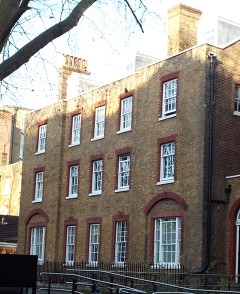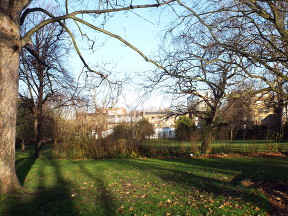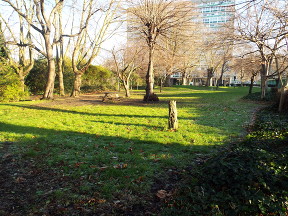





Exploring Southwark and discovering its history


Camberwell House and Lucas Gardens
The asylum opened at a time when the law had recently changed requiring the insane who had formerly been living in workhouses, and often abused, to be cared for in separate establishments. Local residents objected to its opening but nevertheless it opened in January 1846, the majority of patients classified as paupers and their care paid for by the workhouse union of origin. Camberwell House was enclosed within 20 acres of gardens, some of which were laid out as a park. The gardens also included a small market garden tended by the patients, tennis courts and a cricket pitch. Unusual for the time, male and female patients were allowed to mix together in the garden.
By 1859, there were 318 patients at Camberwell House – 247 of these were paupers and 71 were private patients. Twenty years later, it had become the second largest asylum in London, able to accommodate 362 patients. Needing more space, the asylum acquired the terrace just opposite on the south side of Peckham Road.
Camberwell House did not join the NHS when it formed in 1947 and closed in 1955. The buildings on both sides of the road became council offices and more recently halls of residence for UAL Camberwell School of Art with the exception of the Southwark Registry Office which remains in one of the houses on the south side. The extensive gardens behind the houses on this side of the road was formed into a public park, Lucas Gardens, which opened in 1955. The park was newly landscaped in the late 1990s with new flower beds, paths and ornamental trees. Sceaux Gardens Estate was built in the grounds of the main hospital on the north side but the mature trees and paths of the hospital gardens were retained to form small park areas within the estate.



On the north side of Peckham Road, next to UAL Camberwell College of Art is a row of elegant Georgian houses built in 1790. Originally called Alfred House, the premises were initially used as a school and later sold to the Royal Navy. It became the first Royal Naval School for sons of officers who were unable to give their sons a high standard of education. The Royal Naval School moved to different premises in 1846 and the houses, renamed Camberwell House, became an asylum.